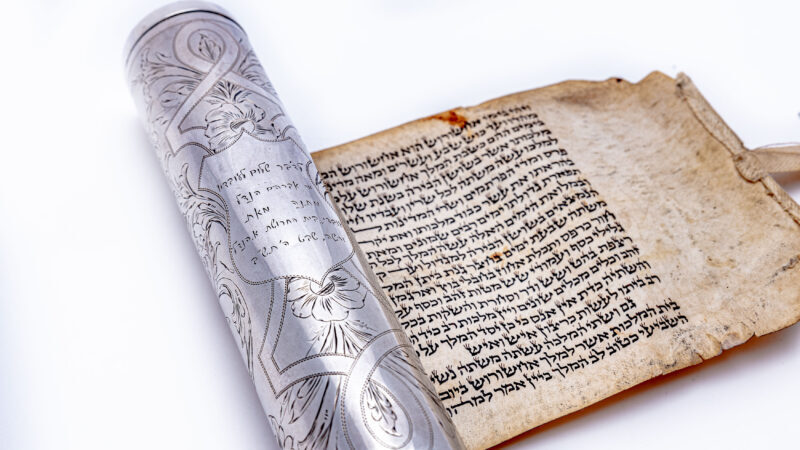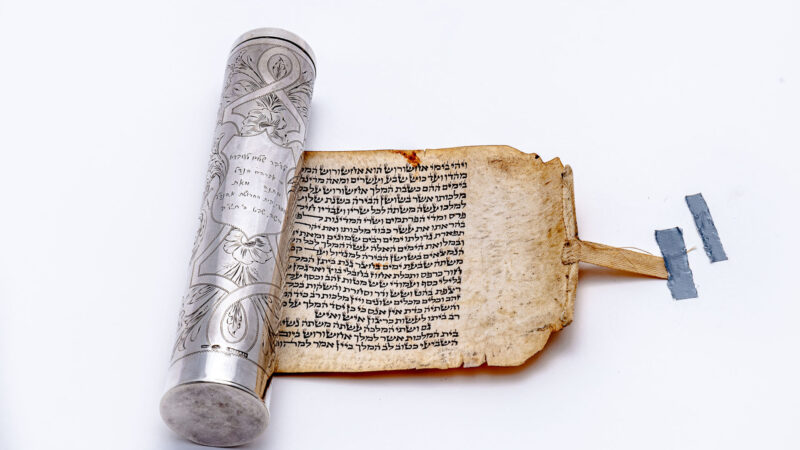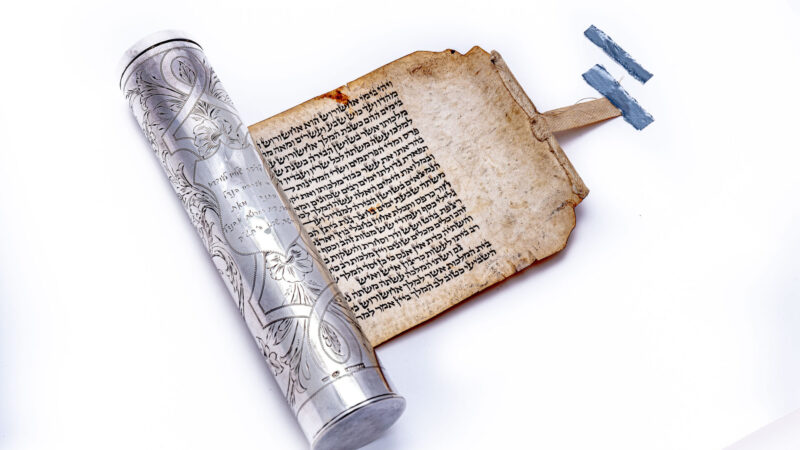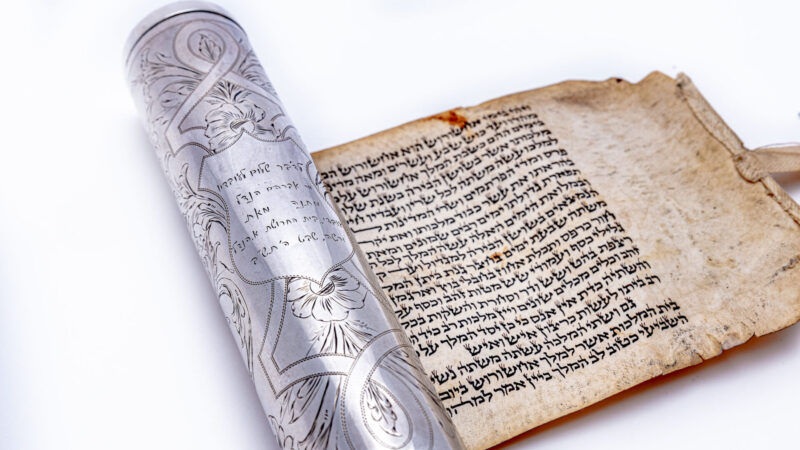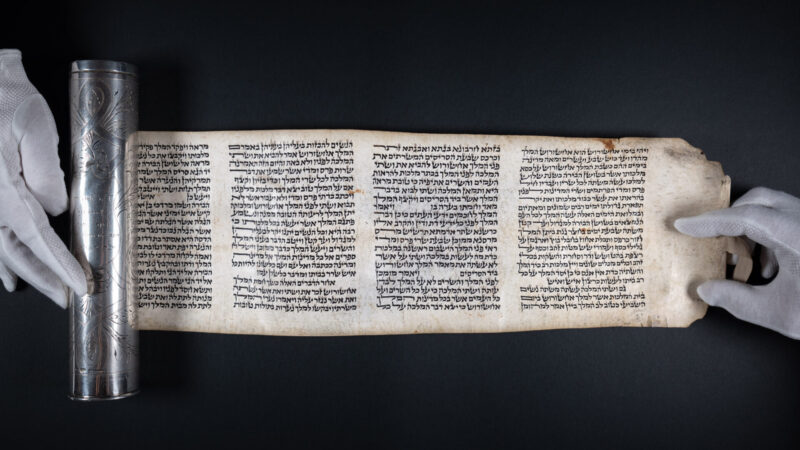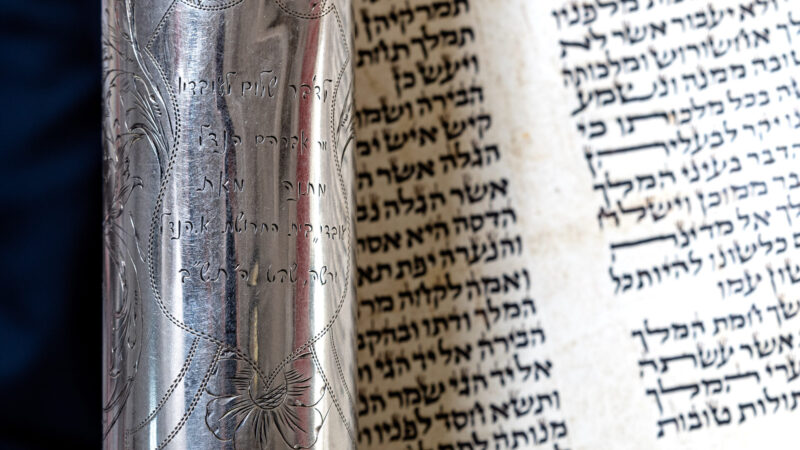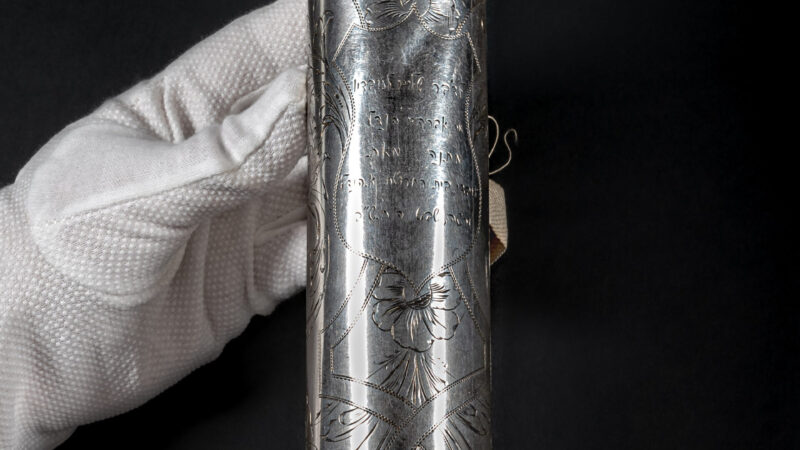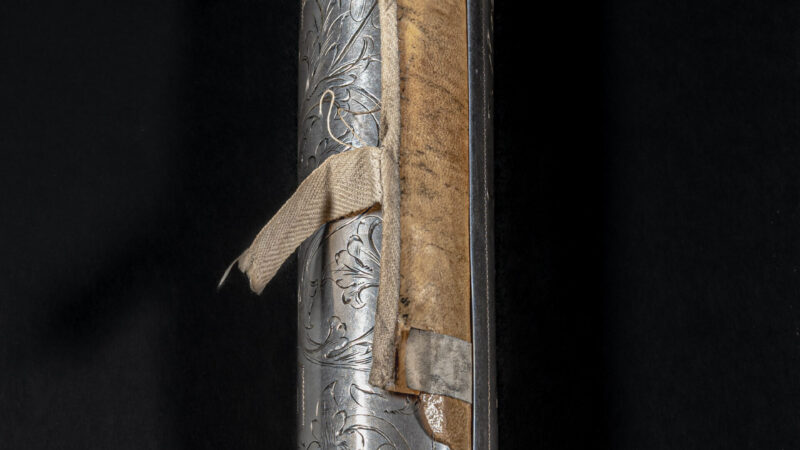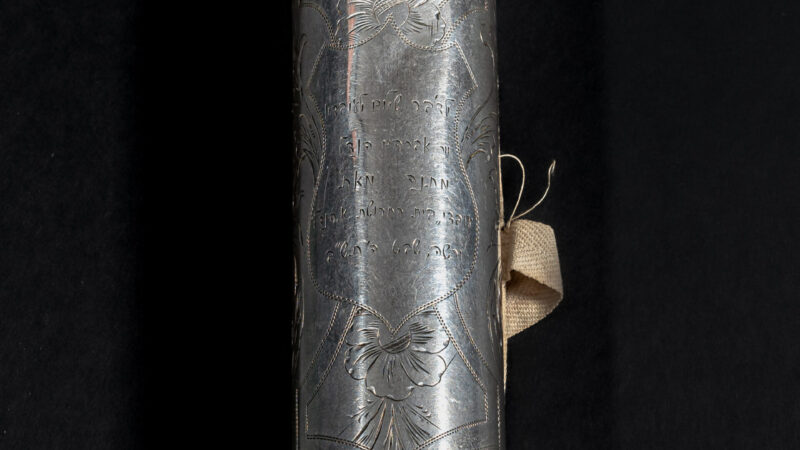The Megillah from the Warsaw Ghetto
On the occasion of the holiday of Purim we present you a unique object from the Warsaw Ghetto Museum collection: the megillah of Avraham Hendel, a manager of the Schultz factory in the Warsaw Ghetto where he provided refuge for a number of religious leaders. The megillah was purchased in March 2022 through an international auction.
The word ‘megillah’ (from Hebrew ‘scroll’) stands for Five Scrolls (hamesh megilot) which are inextricably linked to the celebrations of certain Jewish holidays. One of the most ancient love poems known, „Song of the Songs”, is recited in synagogues during the holiday of Pesach. Another one, „Book of Ruth”, is recited during Shavuot. On the day of Tisha B’av, to commemorate the destruction of the Second Temple, the verses of the “Book of Lamentations” are read. Ecclesiastes (‘Kohelet’), in its turn, is read on the Sabbath of Sukkot.
However it is to the „Book of Esther” (Megillat Esther) that the term ‘megillah’ has clung to most strongly, becoming a synonym for this formal name. This does not mean that its content leads the way over the other four megilot. Yet it is the only book read from a real, handwritten scroll of parchment. The reading is accompanied by a unique ritual: the listeners are making noise with the help of special rattles each time Haman’s name appears in the story. Apart from this tradition, it was common for each Jewish home to have its own copy of the megillah. That is why craftsmen used to put a lot of effort into illustrating the scroll and producing outstanding, decorative cases made of wood or silver.
What’s interesting, Megillat Esther is the only book in the Hebrew Bible where the name of God is not mentioned. It tells the story of the Jewish people’s rescue from Haman who wanted to lead to their extermination in all of Persia. The joyful holiday of Purim celebrated on the 14th and 15th days of Adar, which falls at the beginning of this week, commemorates this story. The megillah will be read twice: after sunset on Monday and on Tuesday morning. Among other Purim traditions, it is worth mentioning carnival costumes, pastries called hamantash, festive performances called ‘Purimshpils’ or adloyafa – a Purim parade usually accompanied by consuming a significant amount of alcohol.
You can watch our Science Expert rabbi David Berman talking about Megillat Esther here:
In March 2022, WGM purchased an exceptional object – a megillah of Avrahm Hendel, a manager of the Schultz factory in the Warsaw Ghetto dubbed ‘the Rebbes’ Workshop’. He had received it as a gift from the factory workers in winter 1942, shortly before the beginning of the so-called “Grossaktion”.
Avraham Hendel (1894–1973), born in Sokolow Podlaski, was a follower of the local Rebbe. Already as a young person, he was known as a brilliant Torah expert. A few years after his marriage, he moved to Warsaw where he rapidly gained a reputation as a successful businessman. Before the war, he had been a well-known leather wholesaler, “the king of the leather business”. He owned a leather tanning and shoemaking factory. With the beginning of the war and the German occupation and subsequent confiscation of Hendel’s property, a German industrialist from Danzig, Fritz Schultz, took over his factory. However, because of practical reasons, he left Hendel as the manager of the factory.
Hendel used the circumstances and his position to rescue Polish Jewish religious authorities from the Holocaust, or at least to help them to do everything to postpone the tragedy. He hired several dozens religious leaders and Torah experts who, because of their education and experience, didn’t manage to find a job which would let them survive in the ghetto. Among the factory workers were: rabbi Arie Cwi Furmer, a former rector of the Chachmej Lublin yeshiva; Rebbe Kalonymus Shapiro; Abraham Shlomo Rabinowicz, Rebbe Niestadler’s son; Rebbe Moshe Bezalel Alter and his nephew Gaon Meir Alter, the son of Rebbe from Gora Kalwaria known as Imrei Eres; Rebbe Icchak Menachem Mendel Danciger from Aleksandrow, the author of Akeidas Icchok; Blumenfeld, a member of the Mizrachi group; rabbies Menachem Ziemba from the Warsaw district of Praga, Shlomo Chanoch Rabinowicz from Radomsk, Beniamin Paltiel Morgenstern from Kock and David Halberstam from Sosnowiec, as well as rabbi Alexander Zusia Friedman, the secretary of the Agudath Israel party and the author of the antholofy of the commentaries on the weekly Torah portion, Ma’ayaah shel Torah.
Thanks to work at the Hendel’s factory, they could continue to study Torah and to cultivate religious rituals, as Hillel Seidman confirms in his memories. What’s more, Hendel got a special permit to employ workers over the age of 50, which was impossible in most other factories in the ghetto. To express their gratitude to their manager for his engagement into helping the religious Jews, the rabbis gave him Megillat Esther as a gift.
The silver case was crafted by a Polish-Jewish silversmith Izrael Szekman who was a well-known manufacturer of Judaica and other silver terms. The inscription reads: To the Speaker of Peace and his staff (Mr.) Avraham Hendel. A gift from the workers of the A. Hendel factory, Warsaw, Shevet 5702 [January/February 1942]. The term „Speaker of Peace” (Hebrew Dower shalom) is an allusion to Mordechai, one of the main characters in the „Book of Esther” who prevented extermination of thousands of Jews in ancient Persia.
Most of the factory workers were killed in the labor camp in Trawniki in 1943. Hendel himself was hiding in the ghetto till its final liquidation and then escaped to the so-called “Aryan side”. He participated in the Warsaw uprising in 1944 and, disguised as a priest, was sent to the Dachau concentration camp. After the war, he returned to Lodz and then emigrated to Palestine. He spent the rest of his life in Tel Aviv.
The Warsaw Ghetto Museum is constantly looking for objects linked to the Jewish history, everyday life, religion and culture, especially from the interwar and war periods. If you are eager to donate memorabilia to our permanent exhibition, please visit our office at Zielna St. 39. Please contact us by mail: zbiory@1943.pl or by phone: +48 22 419 92 50 (Monday to Friday from 9 am to 5pm).

